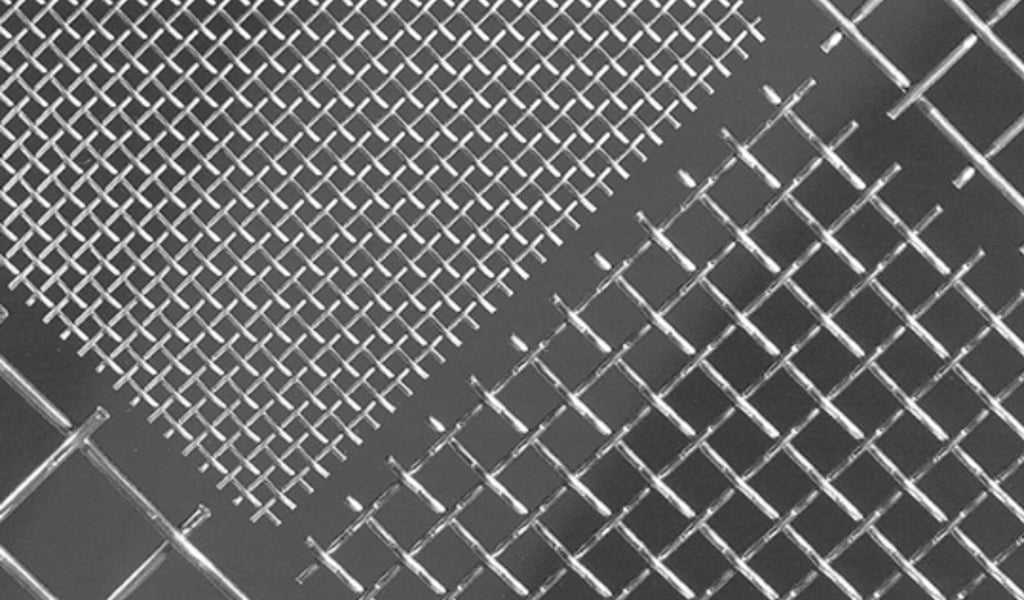The Benefits of Aluminum Wire Mesh in EMI Shielding Applications
Designing EMI shielding that delivers high performance without adding unnecessary weight or cost is a challenge many engineers face. This is especially true in applications where space and efficiency are at a premium.
Traditional shielding materials like copper or stainless steel are effective alternative choices but can introduce compromises such as system weight, cost, and ease of fabrication.
Aluminum wire mesh offers a lightweight, cost-effective alternative without sacrificing essential shielding performance. Its natural conductivity, corrosion resistance, and formability make it an increasingly attractive choice for engineers working in aerospace, automotive, and the consumer electronics sectors.
At W.S. Tyler, our mission is to make the world cleaner and safer through precision-engineered wire mesh solutions, backed by over 150 years of expertise. We help engineers meet performance targets and regulatory demands with materials designed to last.
In this article, we’ll explore what sets aluminum apart in EMI shielding. You’ll learn how it supports effective attenuation, where it performs best compared to other metals, and why its unique balance of properties makes it a smart choice for forward-looking designs.
The Lightweight Solution: Aluminum’s Role in EMI Shielding
In the electromagnetic interference (EMI) industry, the effectiveness of your shielding design often hinges on the materials you choose. While denser metals like copper and stainless steel are commonly used, they aren’t always the most practical for your application.
This is particularly true in weight-sensitive environments like aerospace, electric vehicles, and portable electronics.
Aluminum wire mesh presents a fantastic alternative to heavier metals. Its high strength-to-weight ratio allows engineers to reduce overall system mass without compromising shielding integrity. This not only supports efficiency and optimization but also contributes to easier installation and handling in complex assemblies.
Aluminum’s natural conductivity makes it a suitable material for EMI attenuation, especially in applications that don’t require the extreme shielding levels provided by heavier metals. And because it’s highly corrosion-resistant, aluminum mesh remains effective in outdoor or humid environments where long-term durability matters.
Ultimately, aluminum’s value lies in its ability to provide reliable EMI protection in systems where weight matters. It enables more efficient, streamlined designs while still supporting essential shielding functions.
How Aluminum Wire Mesh Balances Shielding Performance and System Efficiency
Developing an effective system for EMI shielding often means managing trade-offs between conductivity, weight, cost, and mechanical strength. Aluminum wire mesh offers a balanced solution, and delivers the shielding performance engineers rely on while supporting overall system efficiency.
Thanks to its moderate conductivity and fine wire diameter capabilities, aluminum mesh can effectively attenuate EMI across a broad frequency range. While it may not match the conductivity levels of copper, aluminum’s performance is often more than sufficient for most commercial and industrial applications.
In fact, for systems with moderate EMI exposure, aluminum wire mesh achieves excellent attenuation while eliminating the burden of unnecessary weight.
This balance is especially important when designs must optimize for thermal management, portability, or power consumption. Because aluminum is significantly lighter than alternatives like copper or stainless steel, it reduces structural loads and enables more compact, energy-efficient solutions.
What’s more, aluminum’s natural oxide layer adds a layer of corrosion protection, making it a practical choice for harsh or exposed environments where long-term reliability is a concern. It also tends to be more cost-effective, making it a go-to material when projects call for both performance and value.
When Aluminum Outperforms Heavier Metals in EMI Applications
While heavier metals like copper and stainless steel are often top of mind for EMI shielding, there are many scenarios where aluminum outperforms them, particularly when weight, cost, and corrosion resistance are critical design factors.
In aerospace and automotive applications, for example, weight matters to a critical degree. The use of aluminum wire mesh allows engineers to reduce overall component weight without sacrificing electromagnetic compatibility. This is essential for improving fuel efficiency, meeting regulatory standards, and enhancing overall system performance.
Aluminum also holds an edge in portable electronics and enclosures where weight savings contribute directly to user experience and thermal efficiency. Devices become easier to handle, and heat dissipation improves without the need for bulkier shielding components.
Need to discover more about the best materials and specs of your mesh for EMI shielding? Learn more in our article below:
In corrosive or moisture-prone environments, aluminum’s naturally forming oxide layer provides passive protection against degradation, reducing the need for secondary coatings or treatments. Compared to metals like copper, which can oxidize and lose conductivity over time without plating, aluminum offers more predictable long-term behavior in such conditions.
And in large-scale applications, such as telecom cabinets or industrial enclosures, aluminum’s lower cost and ease of fabrication make it a practical choice when budgets are tight but EMI compliance remains non-negotiable.
Stronger Shielding Outcomes Require Lighter Materials
Meeting today’s EMI shielding challenges means thinking beyond traditional materials and embracing smarter, lighter solutions. As designs grow more compact and system demands increase, engineers need materials that deliver high performance without weighing systems down, literally or figuratively.
Aluminum wire mesh provides a reliable, cost-effective path to compliance, particularly in weight-sensitive or corrosion-prone environments. Its unique combination of conductivity, durability, and low mass makes it a compelling option when balancing performance with practical design constraints.
At W.S. Tyler, our mission is to make the world cleaner and safer through precision-engineered wire mesh solutions. With over 150 years of wire mesh expertise, we help engineers design shielding that aligns with both technical requirements and real-world conditions.
Looking to learn more about the regulatory standards that matter most for EMI shielding? Learn more in our article below:
About Dylan Polz
Dylan is a Content Writer with 2 years of experience in marketing and SEO. Passionate about learning and strengthening his writing skills, he is currently expanding his expertise in particle analysis and woven wire mesh technologies. With a strong belief in the power of information to drive positive change, his goal is to develop content that supports cleaner, safer solutions across all industries.



